Essential Patchouli - take time and evolution

The essential
Although Patchouli was arguably the scent of the 60s and 70s, it is currently coming back into vogue, as it is increasingly used in the perfumery industry nowadays. Patchouli is all about a slow-build; its smoky and earthy fragrance takes time to unfurl, and time to produce. However, its amazing properties are worth the wait! Let’s dive into a story of patience and evolution that brings us from Indonesia to Europe and from a green leafed plant to a brownish oil.
Structure of the article
1. The oil of Patchouli
1.1 Scent of this Indonesian oil
1.2 Heart of Patchouli
1.3 What is inside a bottle of Patchouli oil?
1.4 Blends well with...
1.5 Production
1.6 Distillation process
2. Usages of Patchouli oil
2.1 Diffusion
2.2 Massage
2.3 Warnings
3. Plant
4. Conclusion
- Resources
- Very Essential People
- Disclaimer
- Pictures
1. The oil of Patchouli
OK—tell the truth! What do you think of when you think of Patchouli? Hippies? Meditation? Trances and langour? In many ways, any and all of these associations are accurate. Patchouli takes time to produce! Why? First and foremost, because fresh Patchouli leaves are not very highly scented!
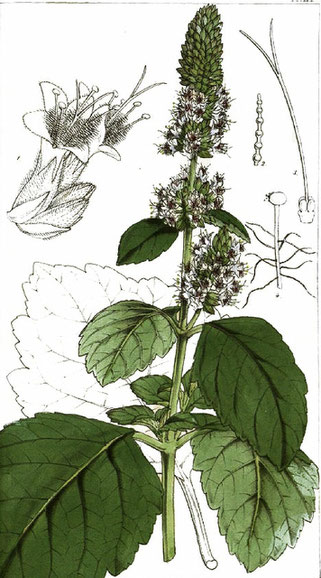
Interestingly, drying them begins the process of concentrating the aromatic molecules into that unique odour. After about a week, the distillation process can begin…and then you have to wait again! The reason for this is that Patchouli oil must mature for a couple of months. During this time, the oil will lose some of its bitter undertones. After that point, it is ready for the open market.
I told you: Patchouli is the story of patience and more patience!
1.1 Scent of this Indonesian oil
But Patchouli is worth the wait! The result of this process is a powerful and long-lasting oil with very interesting notes which differ according to where the Patchouli is from and the process of distillation by which it was made.
These odours run the gamut between smoky, woody, warm, almost medicinal with a touch of camphor to even dusty or mouldy.
For those who are more visually inclined, we’re talking about dark, amber and/or brown colours.
Even though it can express such a great palette of scents, Patchouli oil is a kind of polariser: either you like it, or you don’t!
Often, those persons who profess a love of Patchouli feel that way because it reminds them of their youth. For others, it is too emblematic of a period or age, which often results in them refusing point blank to give it a try.
Since we are being truthful today, I have to confess, it took me quite some time (time again!) to come to appreciate the fragrance of Patchouli. Even more intriguing is that I find that I am not constant in my affections. Depending on my state of mind, I like it…or I emphatically do not.
So, for these reasons, I encourage everybody to give it a sniff from time to time and to keep their hearts and minds open to what Patchouli has to say in a particular time and place.
Just as Patchouli takes a long time to produce, so too may we also take time to learn to appreciate what it has to offer.
1.2 Heart of Patchouli
In the world of perfume, Patchouli also appears as an extract called the “Heart of Patchouli”. In contrast to Patchouli oil, “heart of Patchouli” is a lighter, more modern fragrance.
It is produced through a second and fractionated distillation which “cleans” the original essential oil of its powdery and dusty notes The result is different from the original oil and can, in some cases, be distinguished by its blueberry notes.
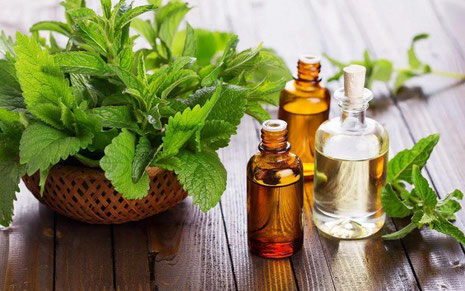
Patchouli was originally considered as a masculine fragrance. However, as fashion in perfumery have evolved over time, Patchouli has increasingly been utilized in feminine perfumes, such as Angel by Thierry Mugler.

Evolution, Evolution!
1.3 What is inside a bottle of Patchouli oil?
Let us go back to the first distillation of Patchouli—the one that produces the essential oil. In addition to its distinctive scent, Patchouli also has a distinctive colour, which can range from yellowish-brown to ochre. It can also be extremely difficult to get that interestingly-coloured oil out of the bottle!
Interestingly, both the colouor of the oil as well as its viscosity (thickness) are often dependent upon the material of the still which produced the oil (inox or copper).
- The colour can be light brown to dark amber
- The thickness of the oil can change from a thicker fluid to extremely viscous.
Regardless of the material of the still, the odour of the Patchouli oil will still be representative of the area on which it was grown!
Photo different Patchouli
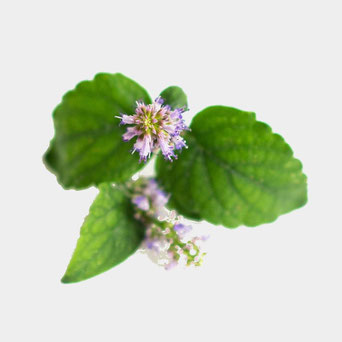
Chemically speaking, between 30-40% of a bottle of essential oil is made of Patchoulol. This molecule has the characteristic odour that gives the smoky and powdery notes to the oil.
Patchoulol has shown to be an extremely effective deterrent to some pests, like Liposcelis bostrychophila. This nasty insect is the number one storage facility pest the world over. So, think about Patchouli oil the next time you are thinking about storing something long-term.
Approximately half of the bottle is composed of sesquiterpenes. Sesquiterpenes are heavy molecules. This is important to know, as they will take time to penetrate the skin and/ or to dissipate in the air due to their size.
Note:
If you want to make your own perfumed candle you will be interested to know that its flash point is 116°C, which makes Patchouli oil a perfect oil to start working with candles.
1.4 Blends well with...
Patchouli by itself works well as a simple perfume. However, it can also be heady.
Blending with other oils can be a good idea. Consider the following
- Woody notes: Vetiver, Sandalwood or Cedar oils
- Floral notes: Rose, Ylang-ylang or Clary Sage oils
- Fresh notes: Peppermint or Blood orange
1.5 Production
Indonesia is the world’s number one producer of Patchouli oil. At about 2000 tons a year, Indonesia accounts for approximately two thirds of the world’s production. The Indonesian island of Sulawesi specializes in the production of Patchouli. The island is home to 20,000 people who belong to the Nilam culture. Interestingly, “Nilam” is another name for Patchouli in that part of the world.
Agriculturally speaking, the plant is highly attractive, as it rapidly becomes productive. Six months after planting, the harvest can start. It is also an interesting culture for farmers as it can be harvested two to three times a year for up to three years.
1.6 Distillation process
After the harvest, there are three ways to treat the leaves before distillation.
- The leaves are allowed to dry for around a week. During this period, aromatic molecules start to concentrate. Without this period of drying, the leaves have almost no smell. (Interesting that nature takes time to concentrate!)
- A fermentation process can also be added to the drying period, which can help produce a better quality oil. Researchers have studies various methods through which to extract the most from Patchouli leaves; it seems as if a combination of drying and fermentation gives the best results in the finished oil.
- Another way puts the fresh leaves directly in the still for the extraction. The essence resulting from this process is pretty rare. There are many reasons why it is not common to find this oil (e.g. tradition, research and regulations).

To come back to the traditional ways, after eight hours, the dry leaves are distilled into a thick oil. Patchouli oil has a good yield (c. 2.5 to 3 % of the weight of the dry leaves). For point of comparison, the essential oil is present in the leaves at about 4.6%.
As mentioned above, after this distillation, the oil must rest before it can be sold, in order for the bitter notes to mature.
In a few words, patience and evolution.
2. Usages of Patchouli oil
There are two main ways to use Patchouli oil: diffusion and massage.
Ingestion of Patchouli oil is not a common practice and I highly encourage you to speak with a trained practitioner before improvising with this technique.
See “Warnings” below for more information.
2.1 Diffusion
Diffusion is certainly the most natural way to use Patchouli oil.
The special and distinctive scent of Patchouli also has a calming effect.
In energetic aromatherapy, the oil is diffused during meditation, where it aids to calm, encourage, stabilize and to drive away fears and negativity.
It is a great oil to use when working on your root chakra, as it helps with being grounded.

You can also put this oil in your cupboards or other storage areas to protect your clothes. In cases such as these, the fragrance plays the role of an insect repellants thanks to its high percentage of patchoulol.
In the beginning of the 19th century, Patchouli leaves were placed between clothes and other beautiful fabrics transported overseas from India. It was through the transport of fabric that people in Europe discovered Patchouli and started using it as a perfume. Apparently, Patchouli was the favourite fragrance of the Empress Josephine de Beauarnais, Emperor Napoleon's first wife.
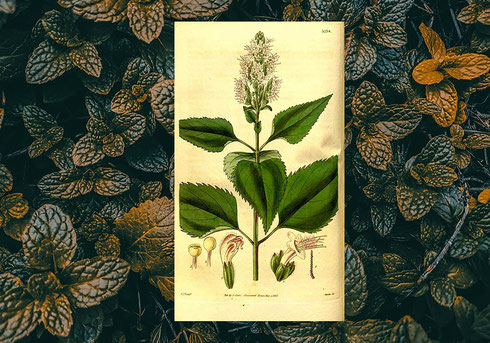
2.2 Massage
With its calming effects, it is not surprising that Patchouli can also have a sedative effect. For this reason, Patchouli can be used in massage to relieve stress and to help ensure a good night’s rest. For massage, essential oil of Patchouli can be mixed with a carrier oil (like Jojoba oil).
From the surface of the skin to deep in the body, Patchouli oil soothes and eases.
- At the superficial level, this Indonesian oil can be used as a tonic for the skin and to correct scars (e.g. from cuts or acne; see a recipe idea below). Personally, I used it after a severe burn on my finger when my new skin was growing back. Patchouli speeds up the healing process. I could clearly see the benefits of the oil compared to other wounds obtained at the same time which I did not treat with Patchouli.
- Patchouli can help with heavy legs and varicose veins, as it increases blood circulation (thanks to the sesquiterpenes). I did an experiment with Patchouli on my wife's chilblains; the Patchouli was quite effective in healing these slow-to-resolve injuries.
- A deep massage with Patchouli can help to calm arthritis. I recently used Patchouli to treat a stiff neck (torticollis); over a course of a few hours, the pain decreased sharply and there was increased motion of the head.
- Some people massage their stomachs with diluted green leaf Patchouli oil to help with digestion. The effect of the massage coupled with the calming fragrance likely make for good allies in such cases. The dry leaves and stems are also used in infusion in traditional medicine. They are known to contribute to good digestion, calming bloating and flatulence, and soothing nausea. In some Caribbean islands Patchouli is also used against nausea.
- At a more intimate level, some attribute aphrodisiac properties to this oil. Once again, it is certainly touch and the relaxing effect of the oil that contribute to other things.

A recipe to attenuate scars
Make 5 ml roll-on at 20% dilution
- 4 drops of Helichrysum Oil (Helichrysum italicum)
- 12 drops of True lavender (Lavandula angustifolia)
- 8 drops of Patchouli (Pogostemon cablin)
- 6 drops of Carrot (Daucus carota)
Fill the bottle with Jojoba oil for example.
Close the roll on, check to homogenize and do not forget label with the name, ingredients, dilution and date.
You can apply onto recent scar three times a day for up to ten days.
On an older scar you will need more time.
2.3 Warnings
Patchouli oil is recommended only for adult use. People with hormone-dependent cancer pathologies or pregnant women should stay away from this oil.
In most cases, common sense is the rule and Après-you does not recommend the ingestion of essential oils.
A remark about the dosage of Patchouli oil
The best tonic effect of the oil is found empirically at a low rate of dilution.
At a high rate, this oil is sedative.
So, adapt the dosage in accordance with the desired effect and the time of day.
3. Plant
There are three different kinds of Patchouli. Only one is cultivated and distilled in essential oil. It is the Pogostemon Cablin.
The tropical plant is in the Lamiacea family (like Lavender and Peppermint).
Its name seems to come from the Tamil word “paccilai” meaning “green leaf”. (Tamil speakers can be found in southern India and Sri Lanka).
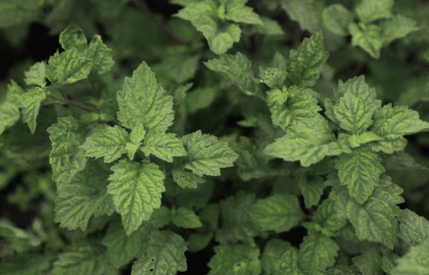
If you have an idea of what Peppermint or Nettle leaves look like, you have a good idea of a Patchouli leaf.
In India, the use of the plant was forbidden to the lower castes. Only the Brahmins (6% of the Indian population) had access to it.
The “green leaf” has been known and used for many centuries. For example, archaeologists found 40 liters of Patchouli macerate in King Tut’s tomb (Tutankhamun lived around 1330 BC).
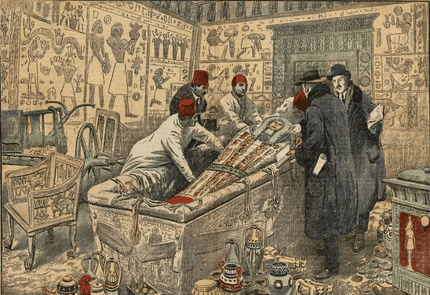
4. Conclusion
Patchouli essential oil is
- An oil that takes its time and invites us to take it with it.
- An oil with earthy, smoky and warm scents that evolves.
- In diffusion to regain calm, or in massage for skin care or more in depth.
Be safe, be essential!
Ressources
https://fr.m.wikipedia.org/wiki/Patchouli
https://www.compagnie-des-sens.fr/huile-essentielle-patchouli/
https://www.compagnie-des-sens.fr/cicatrice-huiles-essentielles/
https://www.forestessentialsindia.com/blog/ingredient/patchouli-oil
https://pubs.rsc.org/en/content/articlehtml/2017/ra/c6ra25894h
https://www.edenbotanicals.com/patchouli-double-distilled.html
https://booksofdante.wordpress.com/tag/patchouli-usages/
https://m.youtube.com/watch?v=YyX77AVHCD4
https://www.sylvaine-delacourte.com/en/blog/patchouli-the-magic-leaf
https://www.myrtea-formations.com/index.php?mod=aromatheque&act=fiche&ind=46
https://youtu.be/pzEhELcxVSo https://www.researchgate.net/publication/283873802_Development_of_patchouli_extraction_with_quality_control_and_isolation_of_active_compounds_with_antibacterial_activity
Very Essential People
You can be part of the VEP group.
You will get informed of the new articles and you will get discounts on the Après-You e-shop, you just have to sign up.
It is free and without engagement.
Disclaimer
I do not pretend or want to replace any medical judgment or prescription. All the information within this post is intended to be informative! Please, always use essential oils carefully and with respect. In case of doubt, always ask a medical professional first.
Pictures
If you have any questions or remarks about the pictures and credits, feel free to send an email to info@apres-you.com.


Write a comment